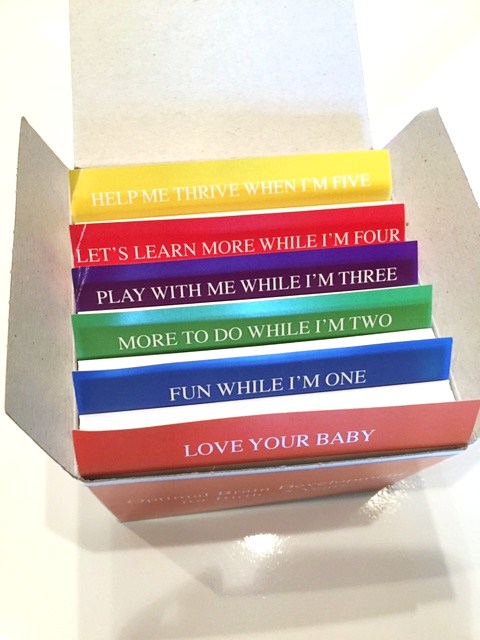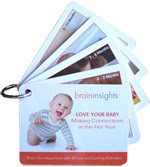Following is a guest post I am anxious to share with you. It is one that provides a wealth of information and valuable links. Those of you that know how passionate I am about creating awareness of the importance of attachment for healthy brain development, will see why I wanted to share this. Hopefully you and all the parents you know will benefit!
This post is shared with permission from the blog, Lion's Whiskers . Once you visit the site, you will want to subscribe!
Bonding with Baby
"When a child walks in the room, your child or anybody else’s child, do your eyes light up? That’s what they’re looking for."– Toni Morrison
Not long after my husband and I brought our newborn son home from the hospital, I was breastfeeding on the couch watching an “Oprah Winfrey Show” segment on the Nobel Prize-winning poetic genius Toni Morrison. She mentioned the importance of loving connections between parents and children by uttering this quote and parenting challenge.
Not long after my husband and I brought our newborn son home from the hospital, I was breastfeeding on the couch watching an “Oprah Winfrey Show” segment on the Nobel Prize-winning poetic genius Toni Morrison. She mentioned the importance of loving connections between parents and children by uttering this quote and parenting challenge.
 |
| Jonathan Fitch, FreeDigitalPhotos.net |
Bonding with my baby seemed intuitive, if not an overwhelming responsibility to do the whole thing “right.” I was not only led by the zeitgeist at the time “attachment parenting,” but sometimes succumbed to the guilt-inducing messages of some of its followers. I stressed about the family bed, how long to breastfeed, and the impact of my frustration with the fact that my son didn’t sleep through the night until he was three! Still, I'm grateful I trusted my gut, imitated what I knew to be true about a healthy mother-infant bond, and followed the attachment parenting advice that fit. It wasn't easy, but nothing as worthwhile and important as bonding ever is.
I learned by trial-and-error that though there are seven identified ways to bond successfully with a baby, love’s resilience forges pathways in the brain and between human beings that we are only just beginning to fully understand. Most of all, I highly underestimated how powerful those loving, awe-inspiring gazes between us all actually promote and sustain our connection as a family for years to come.
In my practice as a child/family therapist and parenting coach I continue to learn more about the importance and benefits associated with healthy bonding between parent and child. I also have the benefit of witnessing the exceptional variety of bonding experiences possible between a primary attachment figure and a child, and the resiliency associated with those bonds promoted through eye contact, touch, smile, movement, feeding, heart connection, and offering comfort during distress. As a parenting coach I pay close attention to the way parents speak about their first days and months with their newborn. Not to mention the first experiences as an adoptive parent meeting his/her child, the first family visits as a new step-parent, or the first days as a foster parent. Most importantly, we focus on the quality of the relationship today and how to promote positive communication, trust, mutual respect, and care for one another.
I witness the benefits everyday with my children—as our love for them provides the “secure base” (Bowlby, 1988) from which they confidently and courageously venture out to discover the world...excitedly returning with reports of their discoveries! Parental love also provides the “safe haven” of comfort and support to weather less successful voyages of discovery, and a place to celebrate curiosity with joy and acceptance (Johnson, 2002).
These days, bonding in our family looks more like watching our kids do their various extracurricular activities, watching movies together, or spotting them as we climb an indoor rock wall together. I still frequently hear “Watch me, Mom!” as I now sit on the sidelines of their lives. I also do my best to stop what I'm doing when they storm through the door at the end of their day, lift my gaze to meet theirs, and listen as they eagerly share the news of their day.
I’ll leave it to Dr. William Sears and his wife, Martha, authors of The Baby Book: Everything You Need to Know About Your Baby from Birth to Age Two (1992, 2003), to summarize the seven basics (or B’s) of attachment parenting which I subscribed to as a new parent (though I'm glad to see they've added “Balance” to the list!):
THE BABY B'S
1. Birth bonding
The way baby and parents get started with one another helps the early attachment unfold. The days and weeks after birth are a sensitive period in which mothers and babies are uniquely primed to want to be close to one another. A close attachment after birth and beyond allows the natural, biological attachment-promoting behaviors of the infant and the intuitive, biological, caregiving qualities of the mother to come together. Both members of this biological pair get off to the right start at a time when the infant is most needy and the mother is most ready to nurture.
"What if something happens to prevent our immediate bonding?"
Sometimes medical complications keep you and your baby apart for a while, but then catch-up bonding is what happens, starting as soon as possible. When the concept of bonding was first delivered onto the parenting scene twenty years ago, some people got it out of balance. The concept of human bonding being an absolute "critical period" or a "now-or-never" relationship was never intended. Birth bonding is not like instant glue that cements the mother-child relationship together forever. Bonding is a series of steps in your lifelong growing together with your child. Immediate bonding simply gives the parent- infant relationship a headstart.
Breastfeeding is an exercise in babyreading. Breastfeeding helps you read your baby's cues, her body language, which is the first step in getting to know your baby. Breastfeeding gives baby and mother a smart start in life. Breastmilk contains unique brain-building nutrients that cannot be manufactured or bought. Breastfeeding promotes the right chemistry between mother and baby by stimulating your body to produce prolactin and oxytocin, hormones that give your mothering a boost.
3. Babywearing
A baby learns a lot in the arms of a busy caregiver. Carried babies fuss less and spend more time in the state of quiet alertness, the behavior state in which babies learn most about their environment. Babywearing improves the sensitivity of the parents. Because your baby is so close to you, you get to know baby better. Closeness promotes familiarity.
4. Bedding close to baby
Wherever all family members get the best night's sleep is the right arrangement for your individual family. Co-sleeping adds a nighttime touch that helps busy daytime parents reconnect with their infant at night. Since nighttime is scary time for little people, sleeping within close touching and nursing distance minimizes nighttime separation anxiety and helps baby learn that sleep is a pleasant state to enter and a fearless state to remain in.
5. Belief in the language value of your baby's cry
A baby's cry is a signal designed for the survival of the baby and the development of the parents. Responding sensitively to your baby's cries builds trust. Babies trust that their caregivers will be responsive to their needs. Parents gradually learn to trust in their ability to appropriately meet their baby's needs. This raises the parent-child communication level up a notch. Tiny babies cry to communicate, not to manipulate.
6. Beware of baby trainers
Attachment parenting teaches you how to be discerning of advice, especially those rigid and extreme parenting styles that teach you to watch a clock or a schedule instead of your baby; you know, the cry-it-out crowd. This "convenience" parenting is a short-term gain, but a long-term loss, and is not a wise investment. These more restrained styles of parenting create a distance between you and your baby and keep you from becoming an expert in your child.
7. Balance
In your zeal to give so much to your baby, it's easy to neglect the needs of yourself and your marriage. As you will learn the key to putting balance in your parenting is being appropriately responsive to your baby – knowing when to say "yes" and when to say "no," and having the wisdom to say "yes" to yourself when you need help.
For more on the art of baby bonding from the Sears’: http://www.attachmentparenting.org/support/articles/artbonding.php
Sources:
Bowlby, J. (1988) A Secure Base: Clinical Applications of Attachment Theory. London: Routledge.
Insel, T. & Young, L. (2001). The neurobiology of attachment. Nature Reviews: Neuroscience, 2, 129-
136. http://www.emotion.caltech.edu/courses/ss140/May8-1.pdf
Insel, T. & Young, L. (2001). The neurobiology of attachment. Nature Reviews: Neuroscience, 2, 129-
136. http://www.emotion.caltech.edu/courses/ss140/May8-1.pdf
Johnson, S. (2003). Introduction to attachment: A therapist’s guide to primary relationships and their renewal.
In Johnson, S. & Whiffen, V. (Eds.)., Attachment Processes in Couple and Family Therapy. NY:
The Guilford Press. (pp. 5-17).
Schore, A. (2001). Effects of a secure attachment relationship on right brain development, affect regulation,
and infant mental health. Infant Mental Health Journal, 22, (1-2),
7-66. http://www.allanschore.com/pdf/SchoreIMHJAttachment.pdf
Schore, A. (2001). Effects of a secure attachment relationship on right brain development, affect regulation,
and infant mental health. Infant Mental Health Journal, 22, (1-2),
7-66. http://www.allanschore.com/pdf/SchoreIMHJAttachment.pdf











